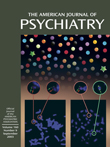Anatomic Brain Abnormalities in Monozygotic Twins Discordant for Attention Deficit Hyperactivity Disorder
Abstract
OBJECTIVE: To examine brain-behavior relationships in attention deficit hyperactivity disorder (ADHD), the authors obtained magnetic resonance imaging (MRI) scans of monozygotic twins discordant for ADHD. METHOD: National recruitment was followed by in-person assessment. MRI scans were measured algorithmically for nine pairs of monozygotic twins discordant for ADHD. RESULTS: The affected twins had significantly smaller caudate volumes (mean difference=–0.56 ml, CI=–0.92 to –0.21) than their unaffected co-twins. CONCLUSIONS: These results provide further support for striatal models of ADHD pathophysiology.



